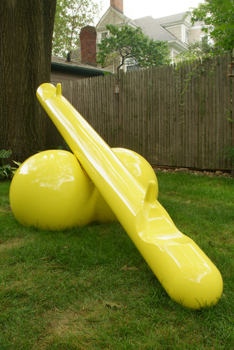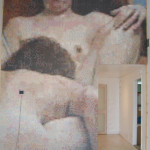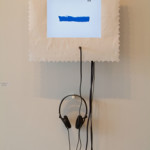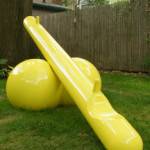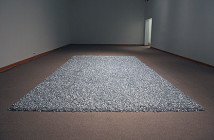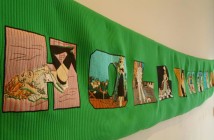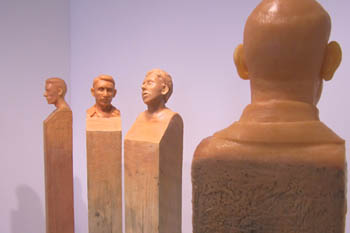What happens when we interact with the computer? Even a simple word processing program, changes the way I write, its not my handwriting, it auto corrects my typos, notifies me of spelling and grammatical blunders, in short its reshaping me and my process form the moment I press the boot up button.
When you use the web this reshaping process, this altered, or mediated (a favorite buzz word) experience not only layers itself into my usage, in some cases it forms it all together. Many of us have alternate “lives” on the web, we have a screen name. The term “screen name” to me is always ironic, for it’s more than just a code name by which one can be identified on screen or by email. It functions as a screen behind which we can act and do things that perhaps we would other wise not do, because after all Stargazer3452 (for example) isn’t real its just a combinations of digits and letters, a remote control signifier. But one thing has come to challenge this screen of anonymity and its spreading- web cams. Now at last the remote control signifier has a referent a face and a body.
I know I have said nothing about Gasp’s show, but I have touched on a central theme around which much of this work orbits, the role of the mediated encounter in our contemporary experience. This is the hot button issue explored variously by the eight assembled artists that comprise “Bit Logic.”
Chantal Zakari is a web artist and by that I mean her work would be impossible without it. Some time ago Zakari started exploring underground sex sites for adventuresome webers. Taking cybersex to the next level, the members on this site, introduced live video feed of themselves stripping and masturbating apparently to whatever or whomever lay across the digital divide, thus taking cybersex one step closer to actual sex.
On the back wall, parallel to the street, a dazzling mosaic spanning the wall’s entire height and breadth faithfully reproduces a web cam image of a woman performing oral sex on a man. I didn’t see this at first or rather couldn’t make out the specifics and still to a large extent cannot. But this is not due to any fault of Zakari’s collaborator Mike Mandell, whose execution is nearly Byzantine, but rather its tessellated surface serves to accentuate an already highly pixilated image. Mosaic, a slow, painstaking procedure it turns out is perfectly suited to the rigorous, mathematical division of space and color that are the building blocks of the digital image. Zakari’s and Mandell’s piece has a mock shock quality, but its divisionist palette makes the image easier to take, because it literally breaks the information down into smaller packets, a method analogous to the system inherent in all computing, and internet communication. Likewise its near cubistically fractured surface distortions obliterates the specific identity of the faces involved in the sexual act, thus giving them the aura of anonymity and secrecy just as screen names do.
In a similar vein Zoe Sheehan Saldana’s work toys with blending laborious, meticulous, human labor with the fast, cheap and cold processes of the computer in her needlepoint portraits. Saldana with excruciating detail and technical felicity replicates the look of digital photographs complete with (as in Zakari and Mandell’s work) pixilated distortions using two of the oldest tools - needle and thread. There is of course an obvious irony in this gesture, in being so faithful to something that is itself a copy, and a poor one at that. But in doing so Saldana attempts to re-capture something lost in these portraits, something crucial to the core of portraiture itself-identity. Her process cannot resurrect the physical details of these people, but the care that goes into each of the twenty portraits, does reaffirm the hand of the artist, the human touch and by extension like the breath of life- humanizes the otherwise mechanical impersonality of their faces.
This attempt at reclaiming the person (or ghost) in the machine is symbolically at work in Jennifer Schmidt’s 3 minute video piece entitled “Waterlogged.” Schmidt is a multi-media artist, but she still uses paper. Schmidt takes a blue piece of paper and a white one of the same size and affixes them to one another. She then carefully incises into the white surface to reveal the blue color underneath and in this way creates a kind of drawing, two exquisite examples of which are on display. But the video was especially prescient given the show’s context. Roving, rushing sweeps and pans across the intricate interlaced patterns of her drawings, and a long pause on the image of a waterfall, give the one the sense of (to use the title of an Ellen Gallagher exhibition) a “watery ecstatic.” There is something certainly symbolic, perhaps even mystical in Schmidt’s usage of abstract signs to express water, itself a loaded symbol in art. But as I said earlier this is the person or ghost and the machine is still very much there. The waterfall that appears in Schmidt’s video is actually a still shot of one of those kitschy photographs that use a mechanical backlight device to approximate the illusion of rushing water. Add to this that the video soundtrack created by sound artist L. Contra sounds like water, but in fact is made from all but the real thing. Nature simply is not present in “Waterlogged” though its central theme is one of the most fundamental elements of it. All we have are interpretations, cheap and fake on one hand, detailed and symbolic on the other, but never the real deal. It gives us options, a choice between signs but no solution of how to understand better our world through them. Schmidt in this way recasts spiritual symbolism in its contemporary role where meaning is often manufactured and nature’s definition is up for grabs.
That dilemma is humorously explored in Heidi Cody’s work. Cody’s slick photomontages (slick as posters) play with current ideas of nature and its supposed contemporary stand ins or substitutes. Cody uses spray bottles, toilet bowl cleaner bottles and more and makes them look like animals, usually some kind of air or water fowl. These bottle fowls are of course usually meant to cover over foul smelling odors often with some (I believe) noxious “natural” scent. We have become so accustomed to these substances through usage and advertisement that “gardenia.” “lemon fresh,” and others have in a sense inhabited our environment. Cody reverses the situation by setting them lose in her invented worlds and imagines them in the style of National Geographic or Audubon Society posters.
Nature or at least the nature of things is also a theme in Christine Tarkowski’s piece “9mm Repeat.” Nailed to the wall were several sheets of white paper, rolls like wall paper, pock marked with holes, the result of it having been subjected repeatedly to the bullet shots of a 9mm hand gun. Onto this hung a small black and white photograph of a young man relaxing on a couch listlessly watching a television in an otherwise barren room. When I first saw this work, I must say I was confused. It felt a bit like a retro 70’s conceptual thing- with its simple action done repeatedly, presumably for the act itself but the seeming incongruous inclusion of the photograph muddled the simplicity of a retread reading. I didn’t see it at first, but on the television within the photograph there is an image of a fighter jet, its wings folded up as if it was being readied for use or was being returned to the hangar following it. A 9mm is a violent weapon, its name is synonymous with gang violence, a 9mm has no other real use. But here its lethal fire power has been anesthetized into a kind of pleasant wallpaper. Warplanes are killing machines as well, a fighter jet has no other real purpose, but within the flat space of television its malevolent spirit is to some (perhaps great) extent neutralized. Violence can be mediated to the extent that it appears innocuous as furniture. In this regard “9mm Repeat” powerfully echoes the themes of mediated experience and the alienation of meaning that the artists of “Bit Logic” both exploit and in certain ways resist.
Finally but not least of all I come to the work of Erin Sadler a bright recent SMFA graduate whose thesis show I had the privilege to see some months back. Sadler takes center stage in Gasps’ newly inaugurated “Garden Investigations.” Gasps’ back lot which hereto for had been a wasteland is green once again with ample space, flowers, and stone walkways. Into this reclaimed space sits Sadler’s seesaw project. With its bright lemon yellow and rounded surface it is the epitome of the finest in child playground sculpture, only its shape that of a double sided phallus resting on a testicular fulcrum prevent a purely innocent experience. When I first saw this work at Tufts I was struck by its raw power but soft humor (my puns may get out of hand) but struggled to get it. But critics aren’t the only ones who struggle with how art works, artists do all the time. Sadler is a deeply curious artist who set out to discover how an art object functions. This is a slight re-working of the oldest question: what is art? This investigation requires dissecting what happens in our brains when we enter the gravitational pull of the aesthetic field of art. It would appear that Sadler’s answer is that the art object is a master of human desire. And it “knows” how to manipulate that desire so we continually return to it, the seduction is never final, we are always going back to art to get more art. The similarity between this and the sexual condition is of course obvious but the straightforward eloquence of this analogy rests entirely on the delicate balancing act that Sadler’s erotic sculpture enacts. Her indoor rocker toy with its silly putty colored skin like her seesaw is at once both playful and striking. Sadler’s art for all its outrageous humor is remarkably subtle. The phallus shapes while obviously there are detailed only to necessity thereby avoiding a boring, simple, or uncomplicated read. Sadler rounds out this extraordinary show with a demonstration of the power of art to mediate in the meanings of something even so solidly “real” and “simple” so that our hold of it can be rendered as illusive as the streaming bits of data that pass between computers across networks and finally and inescapably within our own neural pathways.
- Chantal Zakari & Mike Mandel,Webaffairs, Mosaic tile on wall, 2005.
- Jennifer Schmidt, Waterlogged, digital animation with paper cutout, 2005.
- Erin Sadler, See/Saw, aluminum, 2005.
Links:
Gallery Artists Studio Projects (GASP)
"Bit Logic" is on view September 2-30, 2005 at GASP.
All images are courtesy of the artist and GASP.

